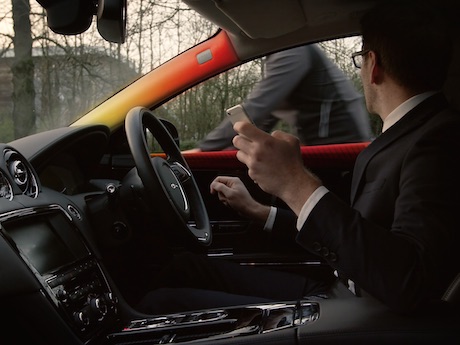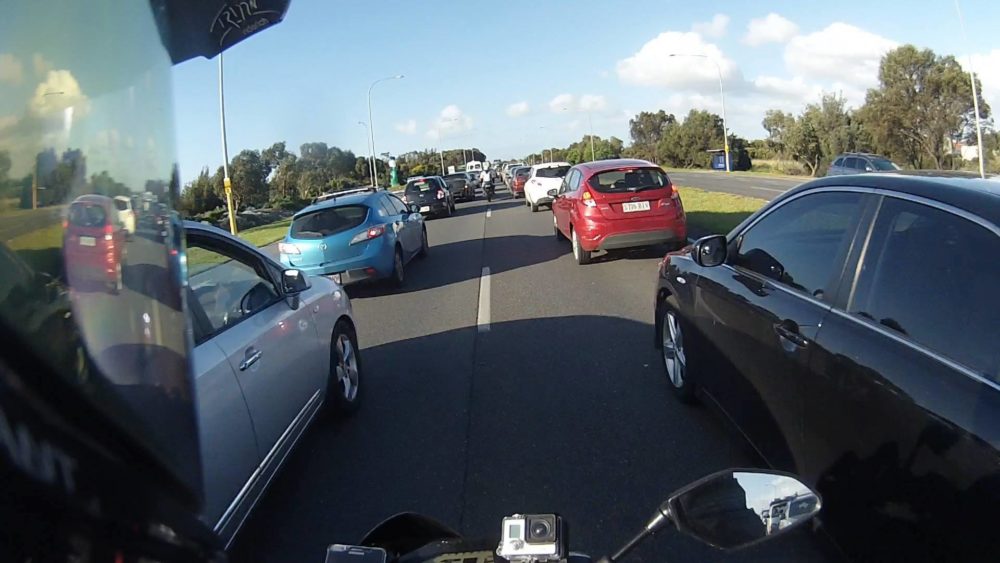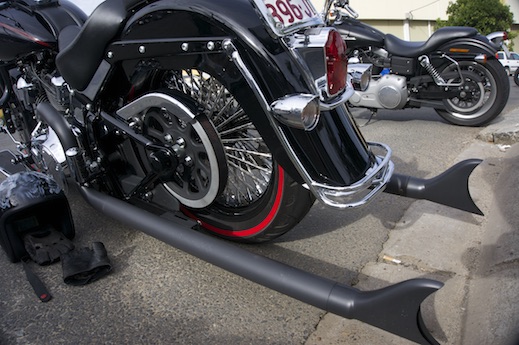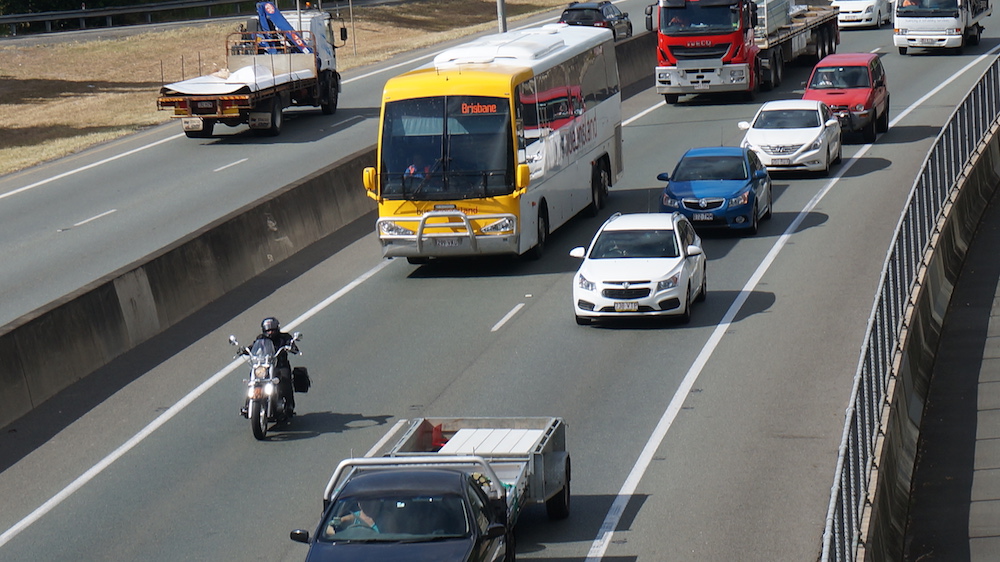The most dangerous place to ride a motorcycle is in traffic, according to statistics, but it can still be fun and you can do a lot to stay safe.
Traffic is dangerous:
- There are many vehicles close to you that may not see you;
- there is more oil on the roads from trucks and old vehicles;
- motorists are distracted by gadgets and gizmos, traffic lights, passengers, advertising signs, etc; and
- you have to keep a watch on traffic up ahead, beside you and behind.
Probably the first step toward preservation in traffic is admitting you and other motorists will make mistakes.
You have to ride for those errors, not for what you think you and traffic should be doing.
That means being able to take avoidance and corrective action.
Here are our 10 tips for riding safely in traffic.
1 Practice makes perfect
Unless you live in the country and never ride in a city, you will encounter traffic, even if it’s just to get out of the city.
So it’s important that you get out regularly in traffic and get a feel for how chaotic it can be and how attentive you have to be.
You will start to develop a sixth sense for what other vehicles are doing and about to do.
For example, a vehicle shifting within their lane or slowing down means they could be about to change lanes or the driver is on the phone or changing a radio station.
You can practise in traffic, but you can also practise other techniques such as emergency braking and quick change of direction on quiet roads.
2 Observe traffic and pedestrians
Motorcycles sit higher than most of the traffic, so you get a clear view of what’s going inside vehicles.
That can give an indication of what they might do.
They could be leaning over to change the radio station, they could be turning their head to check if your lane is clear to move over, or they could be arguing with the kids in the back seat.
Also, watch out for pedestrians who are oblivious because they are on the phone or wearing headphones.
They will also illegally cross through stationary traffic, unaware you are filtering up the middle!
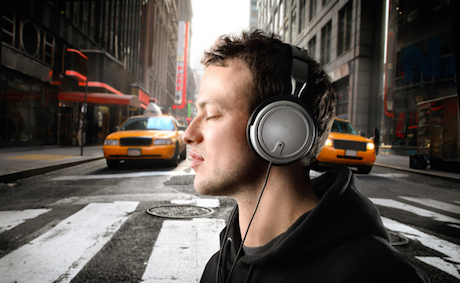
3 Exit strategy
Practising a quick change of direction will help you avoid sudden obstacles such as a vehicle changing lanes or a ute dropping part of their unsecured load.
So it’s important to scan the road ahead for safe places to head if something goes wrong.
Safe places can include breakdown lanes, bike lanes, median strips or in between a queue of stationary or slow-moving vehicles.
You can also plan an exit strategy when stationary. Keep an eye on your mirrors for a vehicle about to rear-end you and plan where you can go to avoid it.
That means always having the bike in gear and the clutch in when stationary. You should have your right foot on the rear brake and your left foot on the ground for a quick getaway.
4 Filter judiciously
Several states now allow lane filtering at no more than 30km/h. That doesn’t mean it is mandatory, so only do it when you feel safe.
Learn the vagaries of the rules that apply in your state and make sure you don’t do anything illegal as police seem to target filtering riders for riding too fast or filtering in the wrong places.
Filtering to the front of the traffic at the lights makes you safer as the traffic behind you is already stopped and you are less likely to be rear-ended.
But be aware that if you filter in front of a big truck, they may not see you as you will be in their blind spot. If you stall when the lights go green, they could run right over the top of you!
Filtering has caused motorist jealousy and road rage, so give people a polite wave as you ride past and you may avoid their anger.
5 Go on green
If you’ve filtered to the front of the traffic at the lights, don’t hang about when the lights turn green or you could get run over!
But also don’t just trust the lights.
They don’t call it “rush hour” for nothing. Most motorists are in a hurry and will take chances such as running red lights just to save a couple of seconds.
So keep an eye on the lights. Since you are so far in front, you will be able to see when the lights signalling in the other direction are changing to red.
As it changes, make sure to look both ways to check if anyone is intending to run their red light.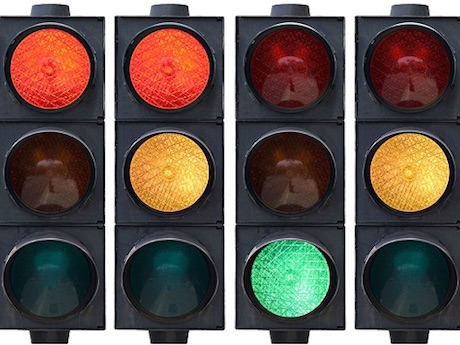
6 Give yourself a buffer
Many rider trainers talk about giving yourself a buffer zone from other vehicles in front, behind, alongside or approaching from the other direction.
But in heavy traffic that is difficult. If you leave a gap in front of you, a car is liable to slip into it.
Creating a buffer in heavy traffic requires you to constantly shift your lane position. This may look erratic to other drivers, but it actually attracts attention and may cause motorists to avoid you as well as you avoiding them!
7 Be seen and heard
Being seen does not mean wearing a fluoro jacket, pants and helmet!
There are so many fluoro-wearing workers and lollipop people on the road, you may actually blend into the background.
You would probably attract more attention if you wore a clown suit!
The best way to be seen by motorists in front of you is to be able to see their faces in their mirrors. Move around in your lane so you are seen in their centre mirror and their side mirrors.
Being seen by vehicles behind you also requires you to move around a bit to attract their attention.
But never assume you have been seen.
Some say a loud exhaust is important for being heard. If you believe that, you may be relying on inaccurate information.
Most drivers in heavy traffic have their windows wound up, air-conditioning pumping and their favourite radio station on full blast. Only the loudest and most annoying exhaust pipe would be heard.
Besides, you are making noise behind you and moving away from it, so motorists in front of you may not hear you until it is too late.
If you notice a vehicle about to move into your lane, don’t pull your clutch and rev your engine to be heard as you may need to suddenly accelerate past them.
Instead, give them a short beep on the horn. That’s what it’s for.
8 Stay ahead
Don’t just drift along with the traffic or you are more likely to get caught up in an incident as well as fall into motorists’ blind spots.
Keep moving ahead. Traffic will be going slower than the speed limit, so you shouldn’t be breaking any laws by overtaking vehicles.
A great way to create a buffer zone and be seen is to stay ahead of the traffic flow and move to the front of the stationary queue at the lights.
9 Rat run
Why sit in heavy traffic like the rest of the cagers?
One of the great things about a motorcycle is that it will slip through tight spaces and we all love a bit of a twisty road, so why not take to the back streets and avoid the traffic?
But be aware a lot of back streets may have slower speed limits. It may not end up being faster, but it will be safer and more fun.
10 Learn your route
If you are commuting every day, pick the best route and stick to it so you learn all the dangers.
Study the patterns of traffic, which lanes move faster at which point, where the snarls occur and what the potential dangers are.
If you know the route, you will be in the correct lane when it is time to turn or merge and not have to make a dangerous last-minute manoeuvre.
But don’t become complacent, thinking you know what will happen.
Heavy traffic is unpredictable and will operate differently on some days, if there is an incident, or if it is raining – that’s when the real idiots emerge!



